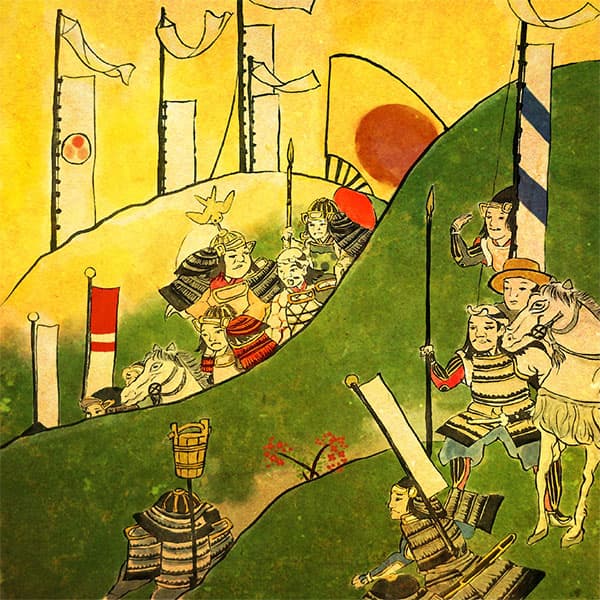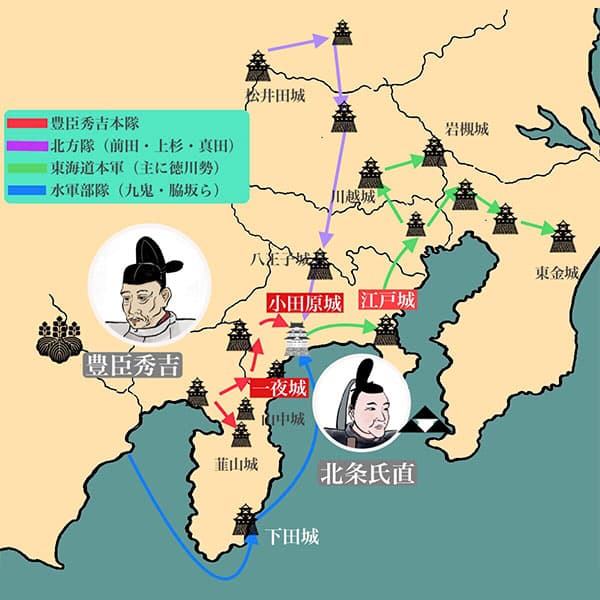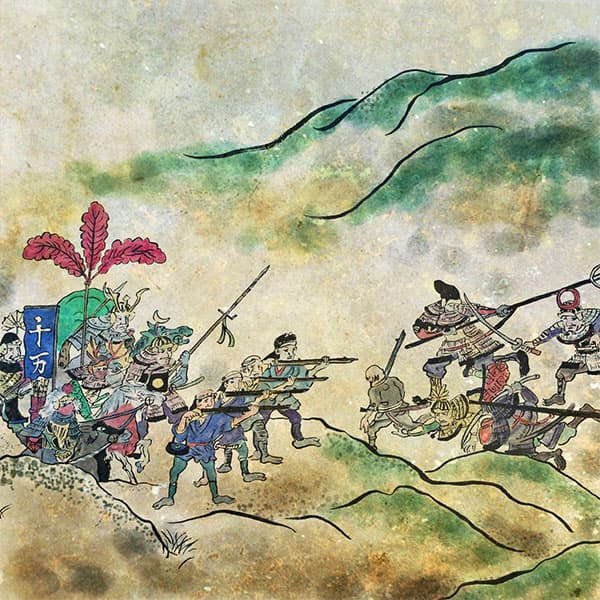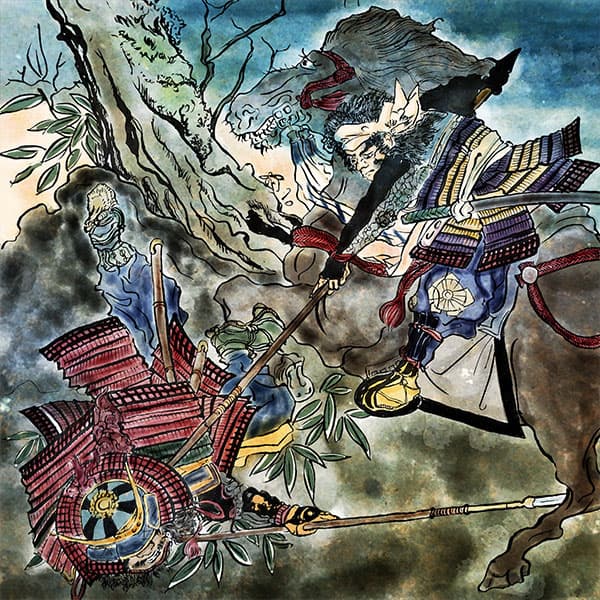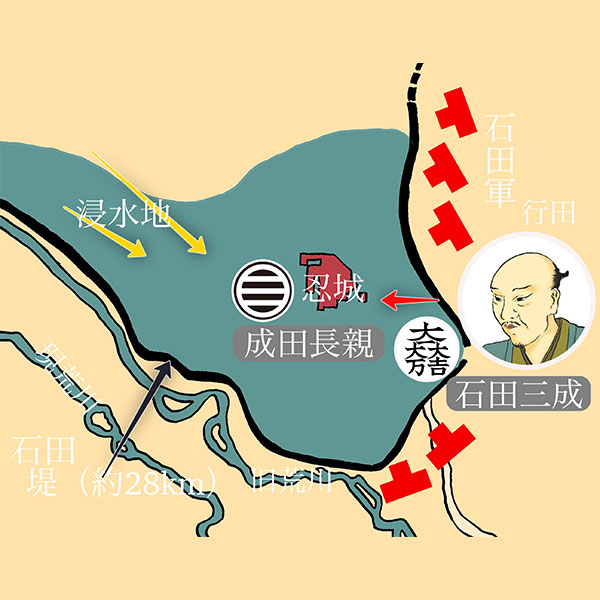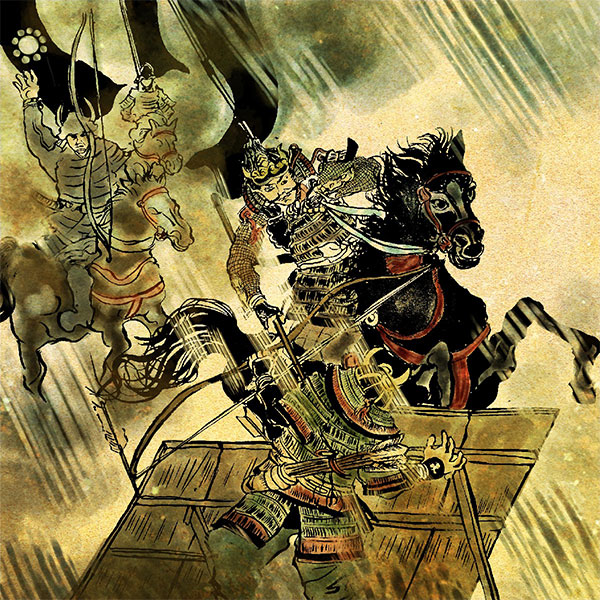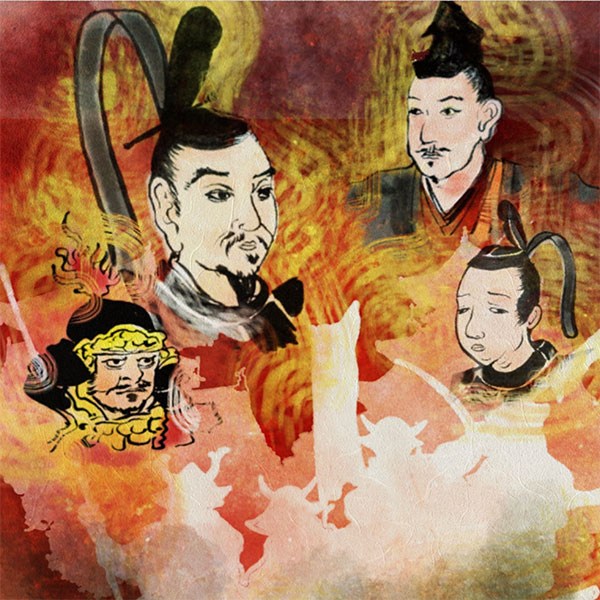Mitsunari Ishida (1/2)A military commander who was an excellent bureaucrat and loyal vassal of Hideyoshi.
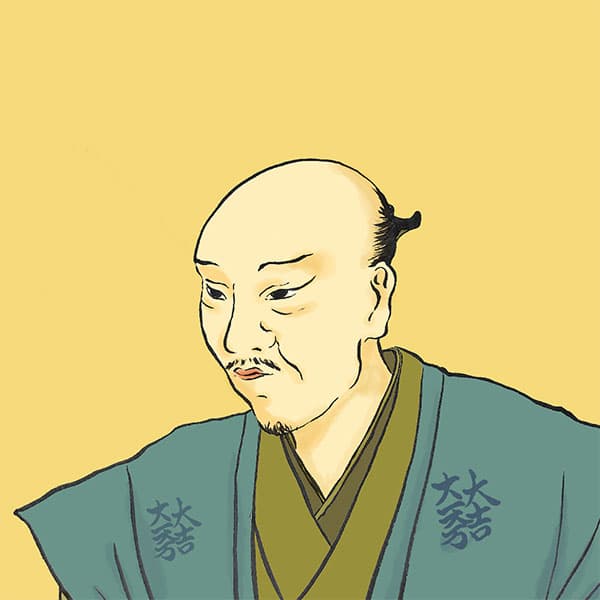
Mitsunari Ishida
- Article category
- biography
- name
- Ishida Mitsunari (1560-1600)
- place of birth
- Shiga Prefecture
- Related castles

Ogaki Castle

Oshijo

Nagahama Castle
- related incident
After Oda Nobunaga, one of the three great heroes of the Sengoku period, was defeated in the Honnoji Incident, it was Toyotomi Hideyoshi who unified the country. Ishida Mitsunari served as one of the five magistrates under Hideyoshi and supported him. After Hideyoshi's death, he formed the Western Army with Terumoto Mori as its commander-in-chief to defeat Tokugawa Ieyasu, who was aiming to take over the country, but was defeated at the Battle of Sekigahara. In the end, he is beheaded and treated like a villain, but was that really the case? This time, we will focus on Mitsunari Ishida.
Served as Hideyoshi Hashiba
He was born in 1560 in Ishida Village, Sakata District, Omi Province (currently Ishida Town, Nagahama City, Shiga Prefecture) as the second son of Masatsugu Ishida. His childhood name was Sakichi.
From around 1574, when Hideyoshi Hashiba served Oda Nobunaga and became the lord of Omi-Nagahama Castle, he served Hideyoshi along with his father Masatsugu and older brother Masazumi, and Mitsunari served as a page.
In June 1582, Nobunaga committed suicide at Honnoji Temple due to the betrayal of his vassal Akechi Mitsuhide, and Hideyoshi, who was in the Chugoku region at the time, rose to prominence within the Oda family by defeating Mitsuhide. Mitsunari also fought hard as a close aide to Hideyoshi.
In 1583, at the Battle of Shizugatake, he was in charge of reconnaissance operations to find out the movements of Katsuie Shibata's army, and was also the most prolific of the spearheads. In 1584, he also participated in the Battle of Komaki and Nagakute. In the same year, he served as the land inspector for Gamo District, Omi Province, and together with other close aides, contributed to Hideyoshi's takeover of the country.
Actively served as an excellent bureaucrat in the Toyotomi administration
In 1585, with Hideyoshi's appointment as Kanpaku, Ishida Mitsunari was given the rank of Junior Fifth Rank (Junior Fifth Rank, Lower Grade), Jibu Shosuke. It is generally said that at the end of the same year, Hideyoshi selected him as the lord of a castle in Minakuchi, Omi Province (present-day Koka City, Shiga Prefecture), which was worth 40,000 koku.
It is said that in the 14th year of Tensho (1586), Shima Kiyooki (Shima Sakon), who was famous as a great general at the time, was given half of Chiyuki and kept him as his servant. Hideyoshi was surprised and praised Mitsunari's actions. Mitsunari was also appointed Sakai Magistrate by Hideyoshi.
Hideyoshi mobilized a large army to pacify Kyushu in the following year, 1587, and was able to end the pacification in a relatively short period of time. One of the reasons for his victory was that he made full use of the navy to mobilize and transport the large army. It's because we were able to do it. Supporting Hideyoshi's expeditions were Mitsunari and other talented officials who were in charge of transporting supplies, weapons, and other supplies to the rear.
After the subjugation of Kyushu, he was ordered to serve as magistrate of Hakata, and together with military inspector Kuroda Yoshitaka (Kuroda Kanbei) and others, he engaged in the division and reconstruction of Hakata town. Also, in 1588, he became an intermediary for the Shimazu family in Satsuma, Kyushu (present-day Kagoshima Prefecture), and arranged an audience with Hideyoshi. In this way, Mitsunari distinguished himself in administration and diplomacy and strengthened his presence.
In 1590, Toyotomi Hideyoshi (Hashiba Hideyoshi) led the Hojo family (Gohojo family) in the Kanto region to conquer Odawara. Mitsunari is ordered by Hideyoshi to attack the Hojo clan's branch castles, Tatebayashi Castle and Oshi Castle. During the attack on Oshi Castle, water from the Moto-Arakawa River was drawn around the castle and a water attack was carried out (a fighting method in which the castle was submerged in water to attack for supplies). Most of the branch castles of the Hojo family in various parts of the Kanto region fell, but Oshi Castle continued to resist until the end. Although he had a difficult time as a war commander, he steadily accumulated achievements, including serving as land surveyor in the Tohoku region, and rose to become an administrative bureaucrat of the Toyotomi family.
In 1591, he entered Sawayama Castle (present-day Hikone City, Shiga Prefecture) as the magistrate of Kuryuchi (a territory directly under Hideyoshi's control).
During the Bunroku War (the dispatch of troops to Korea) from 1592, he crossed the sea and was stationed at Hanseong with Nagamori Masuda and Yoshitsugu Otani, serving as general magistrate for the dispatch of troops to Korea. In 1593, he participated in the Battle of Hekitoikan and the Battle of Koshu Yamashiro. Afterwards, he played an active role in peace negotiations with the Ming Dynasty, returning to Hizen Nagoya Castle with the Ming army's peace envoys Xie Youzusa and Xu Yi. However, his actions as a liaison between Hideyoshi and the local area provoked opposition from members of the Toyotomi family, including Masanori Fukushima and Nagamasa Kuroda.
In 1595, Hideyoshi's nephew Toyotomi Hidetsugu was accused of treason (the Hidetsugu Incident), and was exiled to Mt. Koya and ordered to commit seppuku.
At this time, the Hidetsugu family became extinct, and its vassals became ronin. There, Mitsunari accepted Hidetsugu's vassals, Wakae Hachininshu, and other vassals under his wing.
At this time, he became a vassal and became part of the core of the Ishida family, including Maihyogo (son-in-law of Nagayasu Maeno). Furthermore, 70,000 koku of Omi, out of Hidetsugu's former territory, became Mitsunari's magistrate land. In the same year, Hideyoshi granted him the territory of 194,000 koku of Omi Sawayama, which was a key strategic point connecting the Kinai region and the eastern part of Japan, and he officially became the lord of Sawayama Castle.
In 1597, when the Keicho War began, we provided domestic logistics support. On the other hand, during the Battle of Ulsan Castle that occurred in the same year, generals in Korea proposed a reduction in the front line, and Hideyoshi, furious at this, punished the feudal lords who participated in the proposal with reprimands and the confiscation of some of their territories. There was an incident that occurred.
At this time, the military eye who reported the situation from the field was Nagataka Fukuhara, a relative of Mitsunari, and Nagamasa Kuroda, Iemasa Hachisuka, and others who received punishments believed that this punishment was due to false statements made by Mitsunari and Nagataka. They and Mitsunari begin to conflict.
In 1598, Hideyoshi took away Chikugo Province and Chikuzen Province, which were the territories of Hideaki Kobayakawa (Hideyoshi's nephew-in-law), who had made a mistake during the Korean War, and tried to give them to Mitsunari, but Mitsunari I am declining. Therefore, Chikugo Province and Chikuzen Province became Hideyoshi's holdings, and Mitsunari was appointed as his magistrate and given Najima Castle.
With Hideyoshi's death in August 1598, the Keicho War came to an end, and he engaged in the evacuation of the expeditionary forces.
After Hideyoshi's death
After Toyotomi Hideyoshi's death, his eldest son Toyotomi Hideyori took over as head of the Toyotomi family.
However, as the withdrawal of troops from the Korean Peninsula progressed, a Bunji faction centered on Toyotomi clan bureaucrats such as Ishida Mitsunari, and a military decision faction centered on Toyotomi clan military commanders such as Kato Kiyomasa and Fukushima Masanori were formed within the government. We will deepen the conflict.
In 1598, Tokugawa Ieyasu plotted behind the scenes to enter into marriage relationships with military lords such as Masanori Fukushima, Nagamasa Kuroda, and Iemasa Hachisuka. Early in the following year, 1599, Ieyasu's marriage plan was discovered.
Many feudal lords, including Toshiie Maeda, argued that this was a violation of the prohibition on private marriages between feudal lords in the Goretsu, which was created in August 1595 during Hideyoshi's lifetime. A movement to impeach Ieyasu begins.
The conflict intensified, with envoys from the Four Elders and Five Magistrates being sent to Ieyasu, and Ieyasu also summoning troops from the state, but it was temporarily resolved by Ieyasu submitting a petition on February 12. I saw it.
However, in the same year, Toshiie Maeda died of illness, and immediately afterward, seven generals, Kiyomasa Kato, Masanori Fukushima, Nagamasa Kuroda, Tadaoki Hosokawa, Yukinaga Asano, Terumasa Ikeda, and Yoshiaki Kato, attacked Mitsunari's Osaka mansion (Ishida Mitsunari Attack). ) occurs.
Seven generals and Mitsunari faced each other inside and outside of Fushimi Castle, and Ieyasu intervened and a peace agreement was reached. As a result, Mitsunari resigned from the position of Gobugyo and returned to Sawayama Castle.
In November 1599, Maeda Toshinaga, who was suspected of being involved in a plot to assassinate Ieyasu, effectively lost the position of Tairo, which he had inherited from his father Toshiie, and Asano Nagamasa was also relieved of his magistrate position. Ieyasu took up residence in Kai Province, his fiefdom, and took control of the Toyotomi government.
Battle of Sekigahara
In 1600, Tokugawa Ieyasu departed from Osaka to defeat Kagekatsu Uesugi, who ruled Mutsu Province (Aizu Conquest).
At this time, the Budan faction, which was in conflict with Mitsunari, became the core of the conquest of Aizu and left Osaka.
- related incident

- WriterTomoyo Hazuki(Writer)I have loved history and geography since my student days, and have enjoyed visiting historical sites, temples and shrines, and researching ancient documents. He is especially strong in medieval Japanese history and European history in world history, and has read a wide range of things, including primary sources and historical entertainment novels. There are so many favorite military commanders and castles that I can't name them, but I especially like Hisashi Matsunaga and Mitsuhide Akechi, and when it comes to castles, I like Hikone Castle and Fushimi Castle. Once you start talking about the lives of warlords and the history of castles, there's a side of you that can't stop talking about them.





